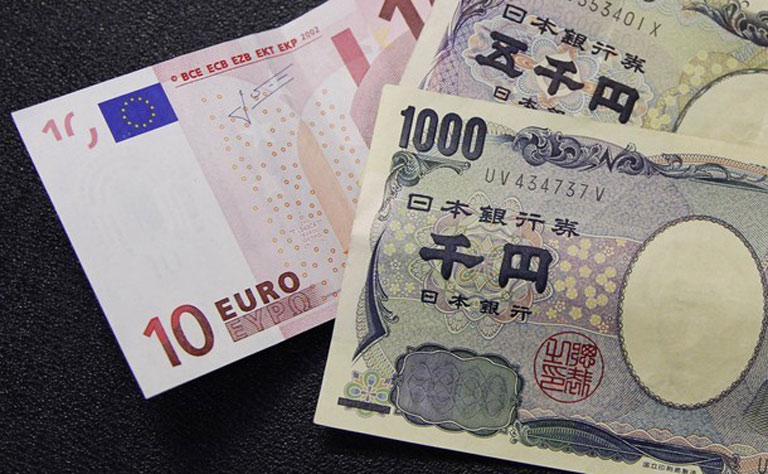Here are the key factors to keep in mind today for Euro trades:
- German Retail Sales: German Retail Sales for January increased by 3.3% monthly and by 2.6% annualized. Economists predicted an increase of 1.9% monthly and of 1.2% annualized. Forex traders can compare this to German Retail Sales for December which decreased by 3.1% monthly and by 2.1% annualized.
- German Unemployment Change and German Unemployment Rate: The German Unemployment Change for February is predicted at -5K and the German Unemployment Rate at 5.0%. Forex traders can compare this to the German Unemployment Change for January which was reported at -2K and to the German Unemployment Rate which was reported at 5.0%.
- Italian Markit/ADACI Manufacturing PMI: The Italian Markit/ADACI Manufacturing PMI for February is predicted at 47.0. Forex traders can compare this to the Italian Markit/ADACI Manufacturing PMI for January which was reported at 47.8.
- French Markit Manufacturing PMI: The Final French Markit Manufacturing PMI for February is predicted at 51.4. Forex traders can compare this to the previous French Markit Manufacturing PMI for February which was reported at 51.4.
- German Markit/BME Manufacturing PMI: The Final German Markit/BME Manufacturing PMI for February is predicted at 47.6. Forex traders can compare this to the previous German Markit/BME Manufacturing PMI for February which was reported at 47.6.
- Eurozone Markit Manufacturing PMI: The Final Eurozone Markit Manufacturing PMI PMI for February is predicted at 49.2. Forex traders can compare this to the previous Eurozone Markit Manufacturing PMI for February which was reported at 49.2.
- Italian GDP: The Italian GDP for 2018 is predicted to increase by 0.8% annualized. Forex traders can compare this to the Italian GDP for 2017 which increased by 1.50% annualized.
- Eurozone Unemployment Rate: The Eurozone Unemployment Rate for January is predicted at 7.9%. Forex traders can compare this to the Eurozone Unemployment Rate for December which was reported at 7.9%.
- Eurozone CPI and Eurozone Core CPI: The Eurozone CPI for February is predicted to increase by 1.5% annualized and the Eurozone Core CPI is predicted to increase by 1.1% annualized. Forex traders can compare this to the Eurozone CPI for January which increased by 1.4% annualized and to the Eurozone Core CPI which increased by 1.1% annualized.
Here are the key factors to keep in mind today for Japanese Yen trades:
- Japanese Jobless Rate and Job-to-Applicant Ratio: The Japanese Jobless Rate for January was reported at 2.5% and the Job-to-Applicant Ratio at 1.63. Economists predicted a figure of 2.4% and of 1.63. Forex traders can compare this to the Japanese Jobless Rate for December which was reported at 2.4% and to the Job-to-Applicant Ratio which was reported at 1.63.
- Japanese Loans & Discounts: Japanese Loans & Discounts for January increased by 3.18% annualized. Forex traders can compare this to Japanese Loans & Discounts for December which increased by 3.27%.
- Japanese Company Profits and Japanese Company Sales: Japanese Company Profits for the fourth-quarter decreased by 7.0% and Japanese Company Sales increased by 3.7%. Forex traders can compare this to Japanese Company Profits for the third-quarter which increased by 2.2% and to Japanese Company Sales which increased by 6.0%. Japanese Capital Spending for the fourth-quarter increased by 5.7% and Japanese Capital Spending excluding Software increased by 5.5%. Economists predicted an increase of 4.5% and of 3.3%. Forex traders can compare this to Japanese Capital Spending for the third-quarter which increased by 4.5% and to Japanese Capital Spending excluding Software which increased by 2.5%.
- Japanese Nikkei Manufacturing PMI: The Final Japanese Nikkei Manufacturing PMI for February was reported at 48.9. Forex traders can compare this to the previous Japanese Nikkei Manufacturing PMI February which was reported at 48.5.
- Japanese Vehicle Sales: Japanese Vehicle Sales for February increased by 1.3% annualized. Forex traders can compare this to Japanese Vehicle Sales for January which increased by 2.3% annualized.
- Japanese Consumer Confidence: Japanese Consumer Confidence for February was reported at 41.5. Economists predicted a figure of 41.6. Forex traders can compare this to Japanese Consumer Confidence for January which was reported at 41.9.
Should price action for the EURJPY remain inside the or breakdown below the 126.900 to 127.650 zone the following trade set-up is recommended:
- Timeframe: D1
- Recommendation: Short Position
- Entry Level: Short Position @ 127.000
- Take Profit Zone: 122.550 – 123.500
- Stop Loss Level: 128.400
Should price action for the EURJPY breakout above 127.650 the following trade set-up is recommended:
- Timeframe: D1
- Recommendation: Long Position
- Entry Level: Long Position @ 128.100
- Take Profit Zone: 129.600 – 130.100
- Stop Loss Level: 127.650
Open your PaxForex Trading Account now and add this currency pair to your forex portfolio.

